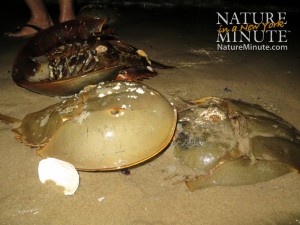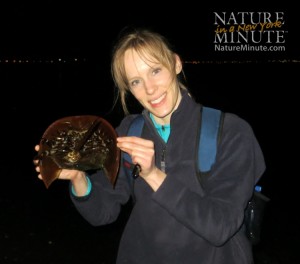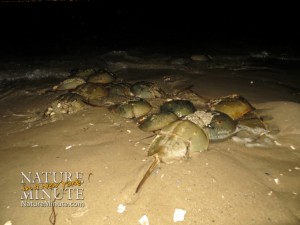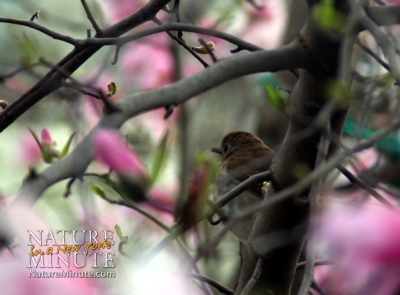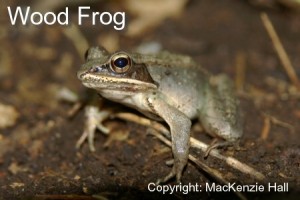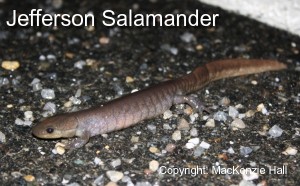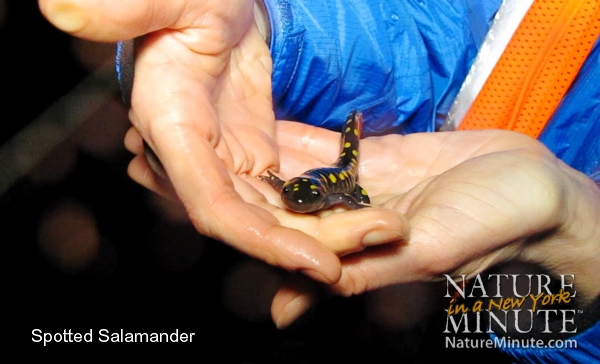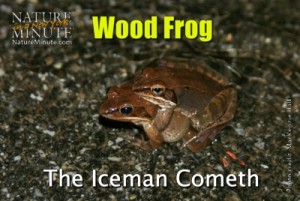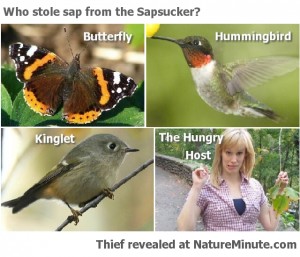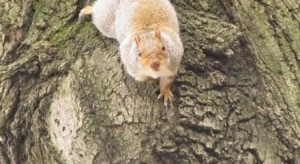by Michele Dudas, PSQ
Naturalist Interpreter
 I awoke to the faintest scritching sound (you know, not quite a scratching sound…something much more quiet and tentative), in my bedroom one night. When I was fully awake, I stayed very still in the dark trying to determine where the noise was coming from and what could be causing it.
I awoke to the faintest scritching sound (you know, not quite a scratching sound…something much more quiet and tentative), in my bedroom one night. When I was fully awake, I stayed very still in the dark trying to determine where the noise was coming from and what could be causing it.
Nothing about the sound made sense to me so I decided to quietly ease open the night stand, grab the emergency flashlight, snap it on and point in the direction of the scritching sound. When I hit the light, I saw something dark scoot into one of my slippers. Mouse, I figured. So, I headed to the kitchen to nab the mouse catching device (plastic food storage container with a lid), and hustled back to my bedroom. I placed the container completely over my slipper and slipped the lid beneath. I scooped it all up and off to the den I went to release my nocturnal visitor back into the great outdoors. I lowered the container to the ground, popped the top on the container and prepared for launch….Nothing exited the container or my slipper.
When I looked, there was no animal in either, so I returned to my bedroom to go critter hunting. I didn’t find a thing. As I was walking past the dresser mirror on my way to return the container to the kitchen, I caught a glimpse of myself. There on my right sleeve was a dark shape, mouse-like in size.
I recalled a car trip, many years ago, in which I found myself with a mouse clinging to my pantyhose in the vicinity of my knee while I was driving down a west Texas highway. It just did not seem likely to me that I would be packing a small rodent twice in one lifetime but there I was with a clinging mystery blob on my sleeve. Upon closer inspection I realized that was no mouse on my sleeve. It was a tarantula.
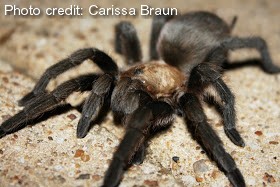 Back to the kitchen I went praying the tarantula would stay put but, it didn’t. It made a beeline for my neck. I love animals, all of them, but was not in a tarantula-on-my-neck-the-middle-of-the-night kind of place. I placed the container lid at the base of my head in effort to persuade the spider to stay out of my hair while I ran back to the den and out the door. I could see in the den window reflection that the spider headed onto my back rather than onto my neck, but it would not leave my back no matter how much I squirmed around. In the end, I had to take off my sleeping shirt to shake the tarantula off. I thought that was the end, but…
Back to the kitchen I went praying the tarantula would stay put but, it didn’t. It made a beeline for my neck. I love animals, all of them, but was not in a tarantula-on-my-neck-the-middle-of-the-night kind of place. I placed the container lid at the base of my head in effort to persuade the spider to stay out of my hair while I ran back to the den and out the door. I could see in the den window reflection that the spider headed onto my back rather than onto my neck, but it would not leave my back no matter how much I squirmed around. In the end, I had to take off my sleeping shirt to shake the tarantula off. I thought that was the end, but…
The next morning my neighbor called me. In the course of the conversation, she casually mentioned how it was so private around my yard that a person might feel compelled “to go naked back there in the middle of the night.”
Moral of the story
Even if only relocating wayward wildlife to your backyard,
for all outdoor excursions, it is good to wear layers.
Editor’s Note: Right about this time of year, May-July, Texas Brown Tarantulas embark on their own migration when males venture out in search of females, who stay in their dens. In some areas, tarantulas can be seen crossing the road in multitudes, or perhaps one might find a lost male who accidentally wandered into the den of another kind of female – the human female! As with all wildlife that undergo large-scale movements to new places, please watch out for them. It’s a tough enough existence as it is.
Michele Dudas is an excellent Naturalist and friend from Texas who is filled with a treasure trove of wildlife stories and experiences. You might be hearing more from her in later posts. Carissa Braun is a Nature Photographer and Naturalist. Check out her blog Nature Photography and Facts for a glimpse of the amazing nature of North Texas.

